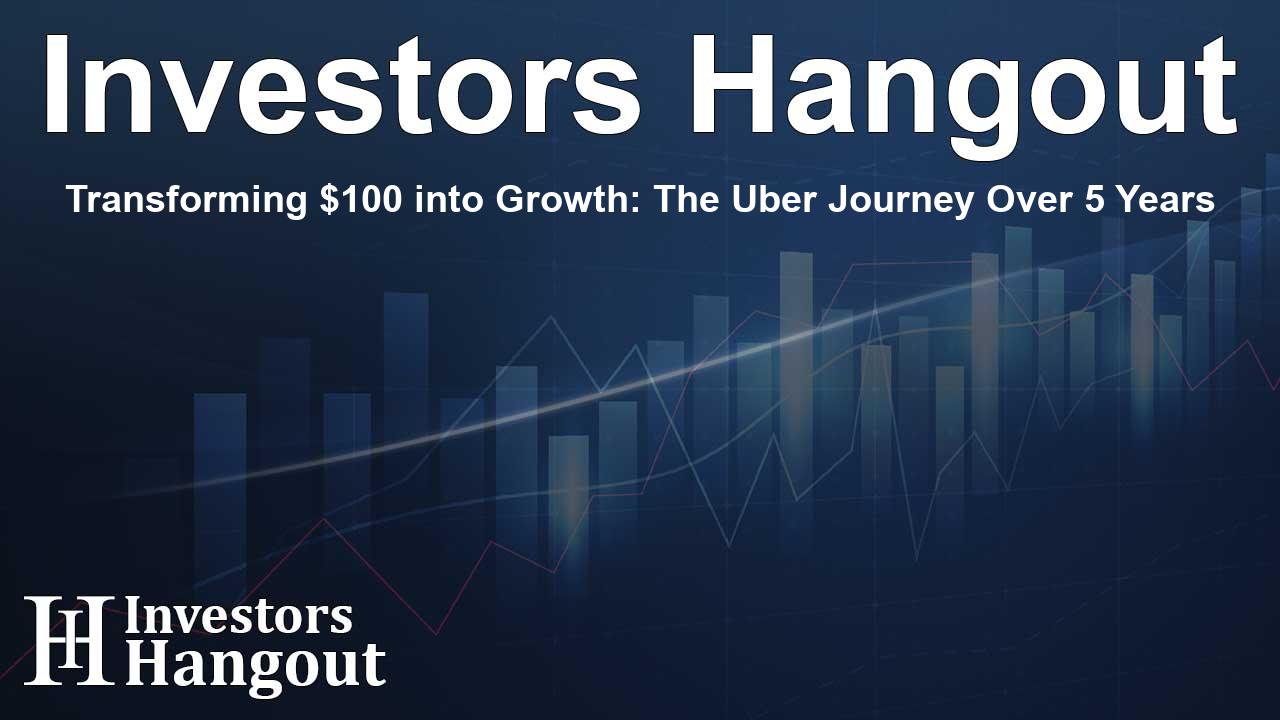Transforming $100 into Growth: The Uber Journey Over 5 Years

The Growth of Uber Technologies Over Five Years
Uber Technologies (NYSE: UBER) has demonstrated remarkable performance in the market over the last five years. It has outperformed the broader market by an impressive 3.57% annually, achieving an average annual return of 17.06%. Today, Uber is solidified as a significant player in the market, boasting a robust market capitalization of approximately $150.53 billion.
Analyzing a $100 Investment
Imagine you had invested $100 in UBER stock five years ago. Today, that investment would be valued at about $211.89 based on the current trading price of $71.65. This stark transformation highlights how strategic investment in innovative companies can lead to remarkable financial growth.
The Impact of Compounded Returns
Understanding the power of compounded returns is essential for any investor. Compounding allows your money to earn returns on past returns, accelerating the growth process over time. In the case of Uber, this compounding effect illustrates how even modest initial investments can lead to substantial wealth-building opportunities.
Key Takeaways for Investors
Investing in high-growth companies like Uber can be advantageous. The impressive growth seen over five years serves as a reminder of the importance of holding onto investments and letting them grow over time. Commitment is crucial in the investment world.
Future Outlook for Uber Technologies
As Uber continues to evolve, investors are eager to see how the company adapts to market challenges and opportunities. The landscape of ride-hailing and delivery services is constantly changing, and Uber's strategic initiatives will play a significant role in its ongoing success. Investors remain optimistic as they watch the company's growth trajectory.
Frequently Asked Questions
What has driven Uber's stock price growth?
Uber's stock price growth can be attributed to its innovative business model, scalability, and ability to adapt to consumer demands in the ride-hailing and delivery markets.
How does Uber compare to similar companies?
Uber has consistently outperformed many of its competitors in terms of market capitalization and growth rate, making it a notable player in the technology and transportation sectors.
What are compounded returns?
Compounded returns are the earnings on an investment that are reinvested to generate additional earnings over time, significantly increasing the amount of returns realized.
Is Uber a good investment?
While past performance does not guarantee future results, many analysts believe that Uber's innovative strategies and market position make it a strong candidate for continued growth.
How can I invest in Uber Technologies?
Investing in Uber is straightforward. You can purchase stocks through most brokerage platforms, allowing you to add UBER to your investment portfolio.
About Investors Hangout
Investors Hangout is a leading online stock forum for financial discussion and learning, offering a wide range of free tools and resources. It draws in traders of all levels, who exchange market knowledge, investigate trading tactics, and keep an eye on industry developments in real time. Featuring financial articles, stock message boards, quotes, charts, company profiles, and live news updates. Through cooperative learning and a wealth of informational resources, it helps users from novices creating their first portfolios to experts honing their techniques. Join Investors Hangout today: https://investorshangout.com/
Disclaimer: The content of this article is solely for general informational purposes only; it does not represent legal, financial, or investment advice. Investors Hangout does not offer financial advice; the author is not a licensed financial advisor. Consult a qualified advisor before making any financial or investment decisions based on this article. The author's interpretation of publicly available data shapes the opinions presented here; as a result, they should not be taken as advice to purchase, sell, or hold any securities mentioned or any other investments. The author does not guarantee the accuracy, completeness, or timeliness of any material, providing it "as is." Information and market conditions may change; past performance is not indicative of future outcomes. If any of the material offered here is inaccurate, please contact us for corrections.